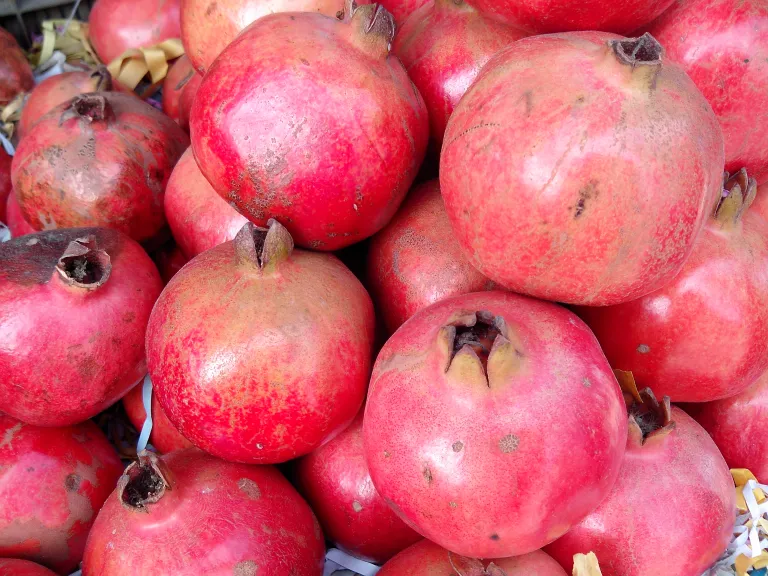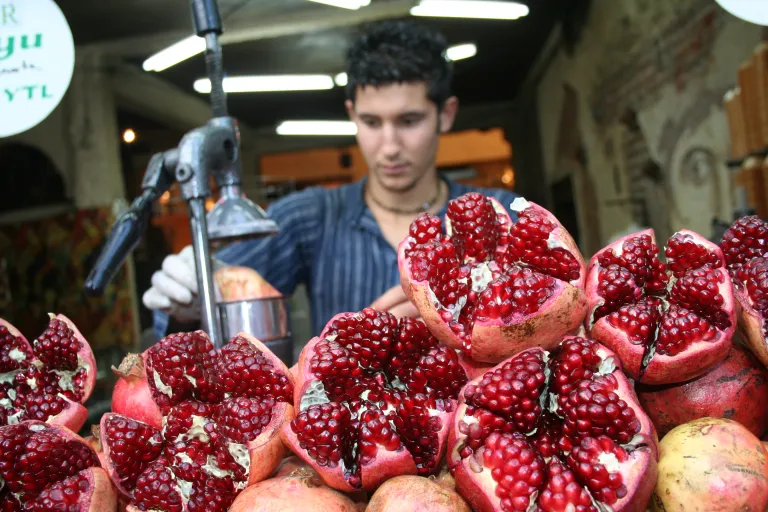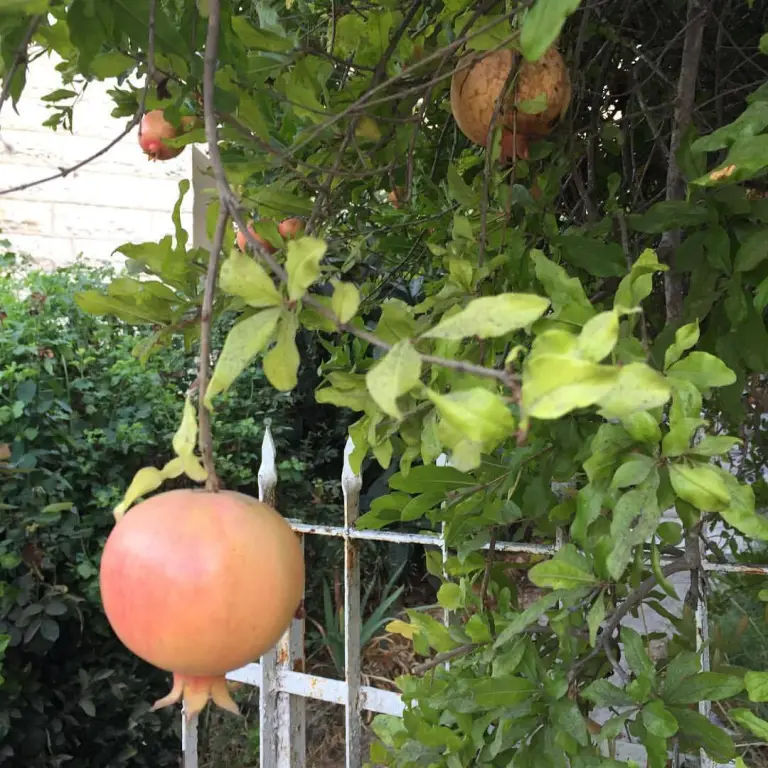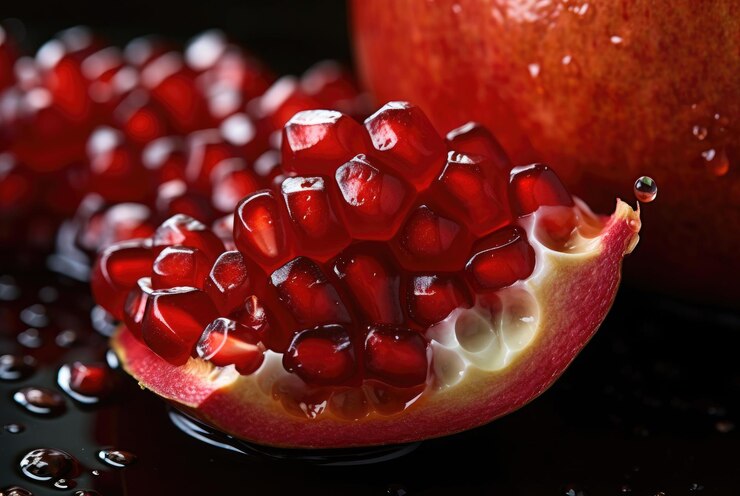With Rosh Hashanah and the rest of the holiday season around the corner, it’s a sign that pomegranate season is upon us.
In Israel, the glossy red globes begin appearing on trees in July, growing out of coral-colored, bell-shaped flowers that cover pomegranate trees in the late spring. The trees are everywhere, growing in many backyards, parks and orchards around the country.
By the time the Jewish New Year arrives, usually in mid-September, the pomegranates, that seed-rich fruit rich in antioxidants, are, well, ripe for the picking. It’s a good thing, too, because they’re the perfect New Year fruit, fulfilling the tradition of eating a new fruit to mark the new year.
The first pomegranates of the season in Israel are called Rosh Pered, or Head of the Mule. It’s considered the classic pomegranate, with a more pinkish hue and filled with hard, sweet seeds. Truth be told, though, those particular seeds are harder to chew, so it’s a less popular pomegranate.
Most people prefer the Wonderful variety, which is that classic ruby red shade with softer seeds that are also in that deep red tone. Another variety that’s a favorite among farmers is called the Melissi, with a whitish shade and pale pink seeds that make it look like it isn’t quite ripe yet, but its seeds are surprisingly sweet.
Once you’ve picked your pomegranate, you have to know how to get the seeds out without spraying yourself with that red juice that stains.

Some people like to slice it in half, and place the cut half in a bowl of water, removing the seeds underwater and then sieving out the water and membrane.
Others use another method, cutting it like an orange by slicing off the crown, and then making four parallel cuts from top to bottom, peeling the pomegranate’s thin skin and exposing the seeds inside.
Once those seeds are exposed, it’s great to pour them into a bowl and eat them straight with a spoon, as ripe, sweet pomegranate have no equal when it comes to flavor or crunch. It’s also great for calming upset stomaches and hot flashes, as well as for relieving blood pressure and lowering cholesterol.

You may not know that the inside of the peel, that yellowish pith and membrane, is particularly healthy but bitter, which is why pomegranate juice is always a good option, as some of the pith gets worked into the sweet juice, masking that bitter taste. So if you happen by a juice stand pressing pomegranate seeds, try a cup. It’s got flavor unlike any other, slightly sweet, with an underlying sour bite.
And in honor of the upcoming holidays, grab a pomegranate from the supermarket. If you’re in Israel, you can just find a tree and pick one for yourself.

If a fresh pomegranate feels daunting, pick up a bottle of pomegranate syrup for use in sauces, and take the easy way out and buy a container of picked pomegranate seeds; no one will be the wiser.
Once you have that all in hand, consider this Autumn Farmers Market Salad recipe, which combines the autumnal flavors of roasted pumpkin, pomegranate seeds and pomegranate syrup on a bed of arugula and with a citrusy dressing. You’ll be glad you did.
Happy New Year!


